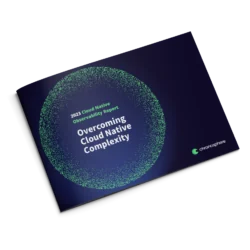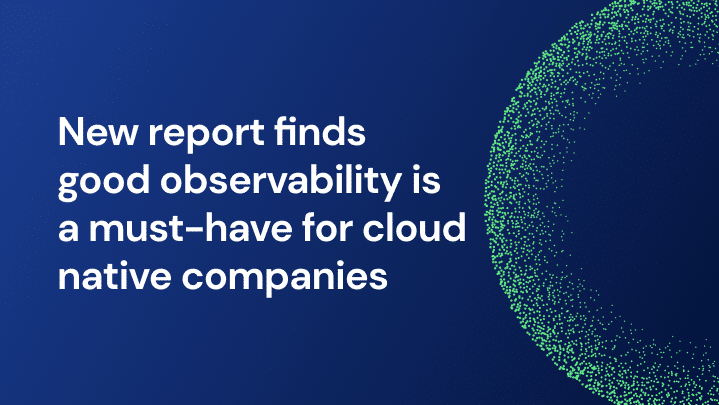Ask anyone whose organization is anywhere along the cloud native journey — beginning, middle, or still in consideration — and they will talk about the positive impact cloud native has on businesses … speed, efficiency, faster innovation, or competitive advantage, you name it. Cloud native is compelling. But that same person’s next statement will likely be tempered by concerns about the exponential complexity and operational challenges that come with cloud native environments — infrastructure is running on containers that are ephemeral and scale dynamically, and there’s explosive data growth. Meanwhile, cloud native applications are built using microservices, adding even more interdependencies to your environment.
So how do you survive the complexity and scale of cloud native? “With great observability”, says a new report that surveyed 500+ full-time employees in engineering and software development roles who are familiar with observability tools and practices.
According to 2023 Cloud Native Observability Report: Overcoming Cloud Native Complexity, when observability is done right organizations are able to innovate faster, improve customer experience, and reduce engineering burnout.
That’s a strong statement, but this study reveals findings to back it up and I’ve summed up a handful below.
Wrestling with cloud native complexity
Respondents in the 2023 Cloud Native Observability Report shared that without observability, operating a cloud native environment is nearly impossible:
- 67% said having a strong observability function provides the foundation for all business value
- 71% said their business can’t innovate effectively without good observability.
Cloud native complexity is also a human problem
The complexity of cloud native goes beyond the business — it negatively impacts engineers (96%) who said they feel stretched to their limits and spend most of their time resolving low-level issues when what they really want to do is innovate.
The inability to solve problems eats into personal time and leads to engineering burnout:
- 90% of individual contributors spend time on nights and weekends monitoring and resolving issues or being on call
- 88% of engineers report negative impacts to themselves and their career from spending so much time troubleshooting
How about quick problem solving? Engineers said you can forget about that thanks to interdependence, volatility, and the sheer amount of data.
87% of engineers said using cloud native architectures have increased the complexity of discovering and troubleshooting incidents.
Are all observability solutions created equal? (no)
An observability solution can help with challenges that come with cloud native environments, but sometimes the problems engineers experience are due the tool itself vs. the lack of one.
- 40% of engineers frequently get alerts from their observability solution without enough context to triage the incident
- 45% say their current observability solution requires a lot of manual time and labor
- 59% say half of the incident alerts they receive from their current observability solution aren’t actually helpful or usable
Adding to that, when it comes to choosing between vendor’s solutions or building their own, the 2023 Cloud Native Observability Report found those using vendor solutions were three times as satisfied, and ultimately, more effective, than those using tools they’ve built.

- Those using a vendor solution are detecting issues 65% faster than those without a cohesive approach, and 30% faster than those with an in-house solution
- 42% of those using a vendor solution said they experienced very severe, customer-facing incidents quarterly or more; much less than the 61% using only their own observability solution who experience incidents quarterly
I could go on and on about what we learned from the feedback we received from hundreds of engineers, but I’ll let you read the 2023 Cloud Native Observability Report for yourself to find the info that helps you.





